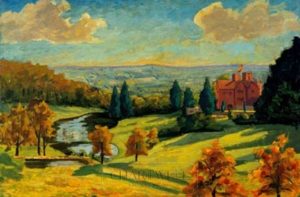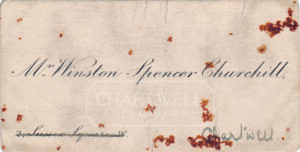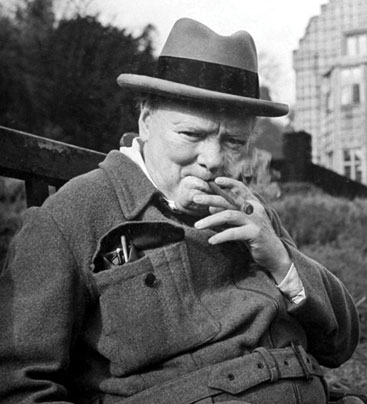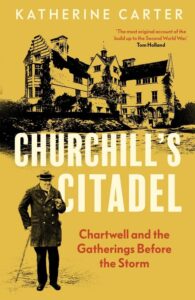SEPTEMBER BRINGS CHARTWELL
 September is the month in which Winston Churchill purchased Chartwell as his lifelong home. Churchill was first shown Chartwell Manor, a derelict, redbrick edifice of Elizabethan origin with little charm but magnificent views, in July 1921, and instantly fell in love with its panoramic placement overlooking the rolling Weald of Kent. The house was about to go to auction, but at a reserve price that Churchill considered too steep. When the property failed to sell, Churchill pounced. Five days after his daughter Mary was born, on September 24, 1922, his new offer was accepted.
September is the month in which Winston Churchill purchased Chartwell as his lifelong home. Churchill was first shown Chartwell Manor, a derelict, redbrick edifice of Elizabethan origin with little charm but magnificent views, in July 1921, and instantly fell in love with its panoramic placement overlooking the rolling Weald of Kent. The house was about to go to auction, but at a reserve price that Churchill considered too steep. When the property failed to sell, Churchill pounced. Five days after his daughter Mary was born, on September 24, 1922, his new offer was accepted.
The rest is Churchillian history… and, ultimately, our history too.
Of course Chartwell became one of Winston Churchill’s favorite painting subjects. He painted “View From Chartwell” in 1938, the year of Hitler’s Anschluss, and a year of such personal financial peril for Churchill that in March he seriously considered selling Chartwell. On April 2, the London Times actually announced that Chartwell was for sale. A few days later, however, Churchill withdrew his beloved home from the market. Throughout the spring and summer he spent as much time as possible there, laboring to complete the final volume of his monumental biography of the first Churchill, Lord Marlborough. During much needed respites from writing, he painted. “View From Chartwell” was the result.
NEW BOOK RECOMMENDATION OF THE MONTH
CHURCHILL’S CITADEL
Chartwell and The Gatherings Before the Storm
by Katherine Carter
Katherine Carter, the esteemed longtime curator of the house and collections at Chartwell offers an engrossing re-examination of how Churchill, while out of power in the 1930s, turned Chartwell into his resistance headquarters against Hitler and the Nazis’ rise in Germany.
We will celebrate the book’s publication with Katherine Carter at a lunchtime in-store event on November 18. Click HERE to advance-order your signed copy now.
.
PRECIOUS PRIZE OF THE MONTH
.

WINSTON CHURCHILL’S CALLING CARD
Mr. Winston Spencer Churchill‘s personal calling card with the printed address lined out in ink:
“2 Sussex Square” — where he and his family lived in London from 1920 through 1923 — and his new address, the newly-purchased “Chartwell,” written in ink beside it, in a hand that may or may not be Churchill’s.



